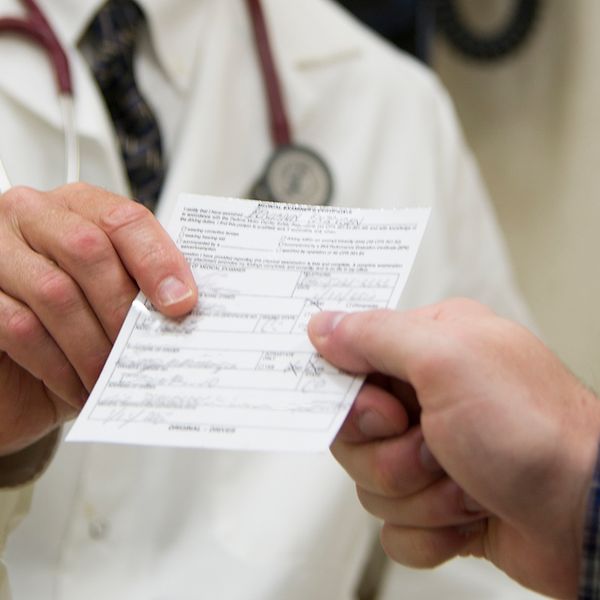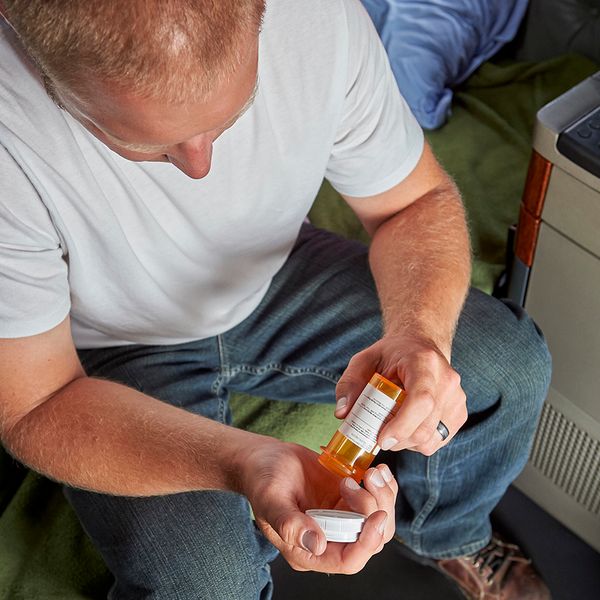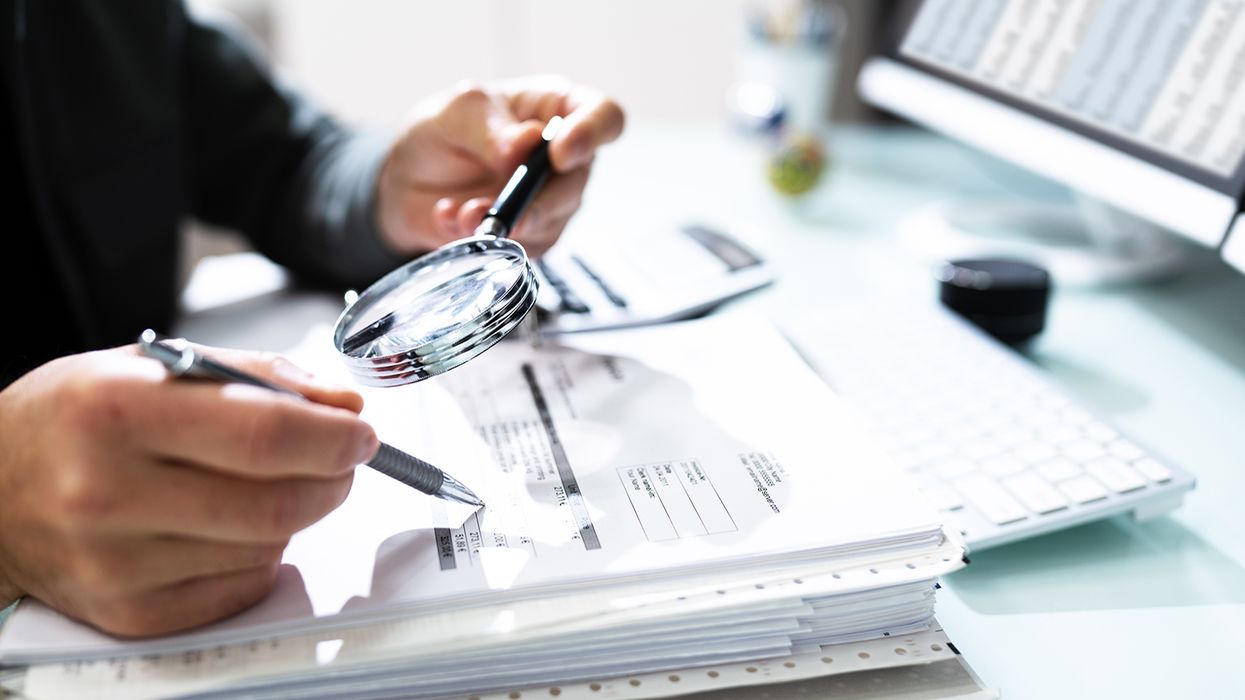FMCSA Final Rule: Updates to Medical Advisory Critera
FMCSA updates the Medical Advisory Criteria published as an appendix in the Code of Federal Regulations (CFR). The appendix provides guidance for medical examiners listed on FMCSA's National Registry of Certified Medical Examiners (National Registry) on the applicability and interpretation of the physical qualification standards for operators of commercial motor vehicles. The advisory criteria in the appendix are also intended to provide recommendations and information to assist medical examiners in applying the standards, basic information related to testing, and matters to consider when making a qualification determination. The updated Medical Advisory Criteria replace all previous versions of the criteria.
DATES: This final rule is effective on January 19, 2024, published in the Federal Register January 19, 2024, page 3577.
View final rule.
| Appendix A to Part 391—Medical Advisory Criteria | ||
| Entire appendix | Revised | View text |
Previous Text
Appendix A to Part 391—Medical Advisory Criteria
I. Introduction
This appendix contains the Agency’s guidelines in the form of Medical Advisory Criteria to help medical examiners assess a driver’s physical qualification. These guidelines are strictly advisory and were established after consultation with physicians, States, and industry representatives, and, in some areas, after consideration of recommendations from the Federal Motor Carrier Safety Administration’s Medical Review Board and Medical Expert Panels.
II. Interpretation of Medical Standards
Since the issuance of the regulations for physical qualifications of commercial motor vehicle drivers, the Federal Motor Carrier Safety Administration has published recommendations called Advisory Criteria to help medical examiners in determining whether a driver meets the physical qualifications for commercial driving. These recommendations have been condensed to provide information to medical examiners that is directly relevant to the physical examination and is not already included in the Medical Examination Report Form.
A. Loss of Limb: §391.41(b)(1)
A person is physically qualified to drive a commercial motor vehicle if that person: Has no loss of a foot, leg, hand or an arm, or has been granted a Skills Performance Evaluation certificate pursuant to §391.49.
B. Limb Impairment: §391.41(b)(2)
1. A person is physically qualified to drive a commercial motor vehicle if that person: Has no impairment of:
(i) A hand or finger which interferes with prehension or power grasping; or
(ii) An arm, foot, or leg which interferes with the ability to perform normal tasks associated with operating a commercial motor vehicle; or
(iii) Any other significant limb defect or limitation which interferes with the ability to perform normal tasks associated with operating a commercial motor vehicle; or
(iv) Has been granted a Skills Performance Evaluation certificate pursuant to §391.49.
2. A person who suffers loss of a foot, leg, hand or arm or whose limb impairment in any way interferes with the safe performance of normal tasks associated with operating a commercial motor vehicle is subject to the Skills Performance Evaluation Certificate Program pursuant to §391.49, assuming the person is otherwise qualified.
3. With the advancement of technology, medical aids and equipment modifications have been developed to compensate for certain disabilities. The Skills Performance Evaluation Certificate Program (formerly the Limb Waiver Program) was designed to allow persons with the loss of a foot or limb or with functional impairment to qualify under the Federal Motor Carrier Safety Regulations by use of prosthetic devices or equipment modifications which enable them to safely operate a commercial motor vehicle. Since there are no medical aids equivalent to the original body or limb, certain risks are still present, and thus restrictions may be included on individual Skills Performance Evaluation certificates when a State Director for the Federal Motor Carrier Safety Administration determines they are necessary to be consistent with safety and public interest.
4. If the driver is found otherwise medically qualified (§391.41(b)(3) through (13)), the medical examiner must check on the Medical Examiner’s Certificate that the driver is qualified only if accompanied by a Skills Performance Evaluation certificate. The driver and the employing motor carrier are subject to appropriate penalty if the driver operates a motor vehicle in interstate or foreign commerce without a current Skill Performance Evaluation certificate for his/her physical disability.
C. [Reserved]
D. Cardiovascular Condition: §391.41(b)(4)
1. A person is physically qualified to drive a commercial motor vehicle if that person: Has no current clinical diagnosis of myocardial infarction, angina pectoris, coronary insufficiency, thrombosis or any other cardiovascular disease of a variety known to be accompanied by syncope, dyspnea, collapse or congestive cardiac failure.
2. The term “has no current clinical diagnosis of” is specifically designed to encompass: “a clinical diagnosis of” a current cardiovascular condition, or a cardiovascular condition which has not fully stabilized regardless of the time limit. The term “known to be accompanied by” is designed to include a clinical diagnosis of a cardiovascular disease which is accompanied by symptoms of syncope, dyspnea, collapse or congestive cardiac failure; and/or which is s likely to cause syncope, dyspnea, collapse or congestive cardiac failure.
3. It is the intent of the Federal Motor Carrier Safety Regulations to render unqualified, a driver who has a current cardiovascular disease which is accompanied by and/or likely to cause symptoms of syncope, dyspnea, collapse, or congestive cardiac failure. However, the subjective decision of whether the nature and severity of an individual’s condition will likely cause symptoms of cardiovascular insufficiency is on an individual basis and qualification rests with the medical examiner and the motor carrier. In those cases where there is an occurrence of cardiovascular insufficiency (myocardial infarction, thrombosis, etc.), it is suggested before a driver is certified that he or she have a normal resting and stress electrocardiogram, no residual complications and no physical limitations, and is taking no medication likely to interfere with safe driving.
4. Coronary artery bypass surgery and pacemaker implantation are remedial procedures and thus, not medically disqualifying. Implantable cardioverter defibrillators are disqualifying due to risk of syncope. Coumadin is a medical treatment which can improve the health and safety of the driver and should not, by its use, medically disqualify the commercial motor vehicle driver. The emphasis should be on the underlying medical condition(s) which require treatment and the general health of the driver. The Federal Motor Carrier Safety Administration should be contacted at (202) 366-4001 for additional recommendations regarding the physical qualification of drivers on coumadin.
E. Respiratory Dysfunction: §391.41(b)(5)
1. A person is physically qualified to drive a commercial motor vehicle if that person: Has no established medical history or clinical diagnosis of a respiratory dysfunction likely to interfere with ability to control and drive a commercial motor vehicle safely.
2. Since a driver must be alert at all times, any change in his or her mental state is in direct conflict with highway safety. Even the slightest impairment in respiratory function under emergency conditions (when greater oxygen supply is necessary for performance) may be detrimental to safe driving.
3. There are many conditions that interfere with oxygen exchange and may result in incapacitation, including emphysema, chronic asthma, carcinoma, tuberculosis, chronic bronchitis and sleep apnea. If the medical examiner detects a respiratory dysfunction, that in any way is likely to interfere with the driver’s ability to safely control and drive a commercial motor vehicle, the driver must be referred to a specialist for further evaluation and therapy. Anticoagulation therapy for deep vein thrombosis and/or pulmonary thromboembolism is not medically disqualifying once optimum dose is achieved, provided lower extremity venous examinations remain normal and the treating physician gives a favorable recommendation.
F. Hypertension: §391.41(b)(6)
1. A person is physically qualified to drive a commercial motor vehicle if that person: Has no current clinical diagnosis of high blood pressure likely to interfere with ability to operate a commercial motor vehicle safely.
2. Hypertension alone is unlikely to cause sudden collapse; however, the likelihood increases when target organ damage, particularly cerebral vascular disease, is present. This regulatory criteria is based on the Federal Motor Carrier Safety Administration’s Cardiovascular Advisory Guidelines for the Examination of commercial motor vehicle Drivers, which used the Sixth Report of the Joint National Committee on Detection, Evaluation, and Treatment of High Blood Pressure (1997).
3. Stage 1 hypertension corresponds to a systolic blood pressure of 140-159 mmHg and/or a diastolic blood pressure of 90-99 mmHg. The driver with a blood pressure in this range is at low risk for hypertension-related acute incapacitation and may be medically certified to drive for a one-year period. Certification examinations should be done annually thereafter and should be at or less than 140/90. If less than 160/100, certification may be extended one time for 3 months.
4. A blood pressure of 160-179 systolic and/or 100-109 diastolic is considered Stage 2 hypertension, and the driver is not necessarily unqualified during evaluation and institution of treatment. The driver is given a one-time certification of three months to reduce his or her blood pressure to less than or equal to 140/90. A blood pressure in this range is an absolute indication for anti-hypertensive drug therapy. Provided treatment is well tolerated and the driver demonstrates a blood pressure value of 140/90 or less, he or she may be certified for one year from date of the initial exam. The driver is certified annually thereafter.
5. A blood pressure at or greater than 180 (systolic) and 110 (diastolic) is considered Stage 3, high risk for an acute blood pressure-related event. The driver may not be qualified, even temporarily, until reduced to 140/90 or less and treatment is well tolerated. The driver may be certified for 6 months and biannually (every 6 months) thereafter if at recheck blood pressure is 140/90 or less.
6. Annual recertification is recommended if the medical examiner does not know the severity of hypertension prior to treatment. An elevated blood pressure finding should be confirmed by at least two subsequent measurements on different days.
7. Treatment includes nonpharmacologic and pharmacologic modalities as well as counseling to reduce other risk factors. Most antihypertensive medications also have side effects, the importance of which must be judged on an individual basis. Individuals must be alerted to the hazards of these medications while driving. Side effects of somnolence or syncope are particularly undesirable in commercial motor vehicle drivers.
8. Secondary hypertension is based on the above stages. Evaluation is warranted if patient is persistently hypertensive on maximal or near-maximal doses of 2-3 pharmacologic agents. Some causes of secondary hypertension may be amenable to surgical intervention or specific pharmacologic disease.
G. Rheumatic, Arthritic, Orthopedic, Muscular, Neuromuscular or Vascular Disease: §391.41(b)(7)
1. A person is physically qualified to drive a commercial motor vehicle if that person: Has no established medical history or clinical diagnosis of rheumatic, arthritic, orthopedic, muscular, neuromuscular or vascular disease which interferes with the ability to control and operate a commercial motor vehicle safely.
2. Certain diseases are known to have acute episodes of transient muscle weakness, poor muscular coordination (ataxia), abnormal sensations (paresthesia), decreased muscular tone (hypotonia), visual disturbances and pain which may be suddenly incapacitating. With each recurring episode, these symptoms may become more pronounced and remain for longer periods of time. Other diseases have more insidious onsets and display symptoms of muscle wasting (atrophy), swelling and paresthesia which may not suddenly incapacitate a person but may restrict his/her movements and eventually interfere with the ability to safely operate a motor vehicle. In many instances these diseases are degenerative in nature or may result in deterioration of the involved area.
3. Once the individual has been diagnosed as having a rheumatic, arthritic, orthopedic, muscular, neuromuscular or vascular disease, then he/she has an established history of that disease. The physician, when examining an individual, should consider the following: The nature and severity of the individual’s condition (such as sensory loss or loss of strength); the degree of limitation present (such as range of motion); the likelihood of progressive limitation (not always present initially but may manifest itself over time); and the likelihood of sudden incapacitation. If severe functional impairment exists, the driver does not qualify. In cases where more frequent monitoring is required, a certificate for a shorter period of time may be issued.
H. Epilepsy: §391.41(b)(8)
1. A person is physically qualified to drive a commercial motor vehicle if that person: Has no established medical history or clinical diagnosis of epilepsy or any other condition which is likely to cause loss of consciousness or any loss of ability to control a motor vehicle.
2. Epilepsy is a chronic functional disease characterized by seizures or episodes that occur without warning, resulting in loss of voluntary control which may lead to loss of consciousness and/or seizures. Therefore, the following drivers cannot be qualified:
(i) A driver who has a medical history of epilepsy;
(ii) A driver who has a current clinical diagnosis of epilepsy; or
(ii) A driver who is taking antiseizure medication.
3. If an individual has had a sudden episode of a nonepileptic seizure or loss of consciousness of unknown cause which did not require antiseizure medication, the decision as to whether that person’s condition will likely cause loss of consciousness or loss of ability to control a motor vehicle is made on an individual basis by the medical examiner in consultation with the treating physician. Before certification is considered, it is suggested that a 6 month waiting period elapse from the time of the episode. Following the waiting period, it is suggested that the individual have a complete neurological examination. If the results of the examination are negative and antiseizure medication is not required, then the driver may be qualified.
4. In those individual cases where a driver has a seizure or an episode of loss of consciousness that resulted from a known medical condition (e.g., drug reaction, high temperature, acute infectious disease, dehydration or acute metabolic disturbance), certification should be deferred until the driver has fully recovered from that condition and has no existing residual complications, and not taking antiseizure medication.
5. Drivers with a history of epilepsy/seizures off antiseizure medication and seizure-free for 10 years may be qualified to drive a commercial motor vehicle in interstate commerce. Interstate drivers with a history of a single unprovoked seizure may be qualified to drive a commercial motor vehicle in interstate commerce if seizure-free and off antiseizure medication for a 5-year period or more.
I. Mental Disorders: §391.41(b)(9)
1. A person is physically qualified to drive a commercial motor vehicle if that person: Has no mental, nervous, organic or functional disease or psychiatric disorder likely to interfere with ability to drive a motor vehicle safely.
2. Emotional or adjustment problems contribute directly to an individual’s level of memory, reasoning, attention, and judgment. These problems often underlie physical disorders. A variety of functional disorders can cause drowsiness, dizziness, confusion, weakness or paralysis that may lead to incoordination, inattention, loss of functional control and susceptibility to accidents while driving. Physical fatigue, headache, impaired coordination, recurring physical ailments and chronic “nagging” pain may be present to such a degree that certification for commercial driving is inadvisable. Somatic and psychosomatic complaints should be thoroughly examined when determining an individual’s overall fitness to drive. Disorders of a periodically incapacitating nature, even in the early stages of development, may warrant disqualification.
3. Many bus and truck drivers have documented that “nervous trouble” related to neurotic, personality, or emotional or adjustment problems is responsible for a significant fraction of their preventable accidents. The degree to which an individual is able to appreciate, evaluate and adequately respond to environmental strain and emotional stress is critical when assessing an individual’s mental alertness and flexibility to cope with the stresses of commercial motor vehicle driving.
4. When examining the driver, it should be kept in mind that individuals who live under chronic emotional upsets may have deeply ingrained maladaptive or erratic behavior patterns. Excessively antagonistic, instinctive, impulsive, openly aggressive, paranoid or severely depressed behavior greatly interfere with the driver’s ability to drive safely. Those individuals who are highly susceptible to frequent states of emotional instability (schizophrenia, affective psychoses, paranoia, anxiety or depressive neuroses) may warrant disqualification. Careful consideration should be given to the side effects and interactions of medications in the overall qualification determination.
J. [Reserved]
K. Hearing: §391.41(b)(11)
1. A person is physically qualified to drive a commercial motor vehicle if that person: First perceives a forced whispered voice in the better ear at not less than 5 feet with or without the use of a hearing aid, or, if tested by use of an audiometric device, does not have an average hearing loss in the better ear greater than 40 decibels at 500 Hz, 1,000 Hz, and 2,000 Hz with or without a hearing aid when the audiometric device is calibrated to American National Standard (formerly ADA Standard) Z24.5-1951.
2. Since the prescribed standard under the Federal Motor Carrier Safety Regulations is from the American National Standards Institute, formerly the American Standards Association, it may be necessary to convert the audiometric results from the International Organization for Standardization standard to the American National Standards Institute standard. Instructions are included on the Medical Examination Report Form.
3. If an individual meets the criteria by using a hearing aid, the driver must wear that hearing aid and have it in operation at all times while driving. Also, the driver must be in possession of a spare power source for the hearing aid.
4. For the whispered voice test, the individual should be stationed at least 5 feet from the medical examiner with the ear being tested turned toward the medical examiner. The other ear is covered. Using the breath which remains after a normal expiration, the medical examiner whispers words or random numbers such as 66, 18, 3, etc. The medical examiner should not use only sibilants (s sounding materials). The opposite ear should be tested in the same manner.
5. If the individual fails the whispered voice test, the audiometric test should be administered. If an individual meets the criteria by the use of a hearing aid, the following statement must appear on the Medical Examiner’s Certificate “Qualified only when wearing a hearing aid.”
L. Drug Use: §391.41(b)(12)
1. A person is physically qualified to drive a commercial motor vehicle if that person does not use any drug or substance identified in 21 CFR 1308.11, an amphetamine, a narcotic, or other habit-forming drug. A driver may use a non-Schedule I drug or substance that is identified in the other Schedules in 21 CFR part 1308 if the substance or drug is prescribed by a licensed medical practitioner who:
(i) Is familiar with the driver’s medical history, and assigned duties; and
(ii) Has advised the driver that the prescribed substance or drug will not adversely affect the driver’s ability to safely operate a commercial motor vehicle.
2. This exception does not apply to methadone. The intent of the medical certification process is to medically evaluate a driver to ensure that the driver has no medical condition which interferes with the safe performance of driving tasks on a public road. If a driver uses an amphetamine, a narcotic or any other habit-forming drug, it may be cause for the driver to be found medically unqualified. If a driver uses a Schedule I drug or substance, it will be cause for the driver to be found medically unqualified. Motor carriers are encouraged to obtain a practitioner’s written statement about the effects on transportation safety of the use of a particular drug.
3. A test for controlled substances is not required as part of this biennial certification process. The Federal Motor Carrier Safety Administration or the driver’s employer should be contacted directly for information on controlled substances and alcohol testing under Part 382 of the FMCSRs.
4. The term “uses” is designed to encompass instances of prohibited drug use determined by a physician through established medical means. This may or may not involve body fluid testing. If body fluid testing takes place, positive test results should be confirmed by a second test of greater specificity. The term “habit-forming” is intended to include any drug or medication generally recognized as capable of becoming habitual, and which may impair the user’s ability to operate a commercial motor vehicle safely.
5. The driver is medically unqualified for the duration of the prohibited drug(s) use and until a second examination shows the driver is free from the prohibited drug(s) use. Recertification may involve a substance abuse evaluation, the successful completion of a drug rehabilitation program, and a negative drug test result. Additionally, given that the certification period is normally two years, the medical examiner has the option to certify for a period of less than 2 years if this medical examiner determines more frequent monitoring is required.
M. Alcoholism: §391.41(b)(13)
1. A person is physically qualified to drive a commercial motor vehicle if that person: Has no current clinical diagnosis of alcoholism.
2. The term “current clinical diagnosis of” is specifically designed to encompass a current alcoholic illness or those instances where the individual’s physical condition has not fully stabilized, regardless of the time element. If an individual shows signs of having an alcohol-use problem, he or she should be referred to a specialist. After counseling and/or treatment, he or she may be considered for certification.




























































